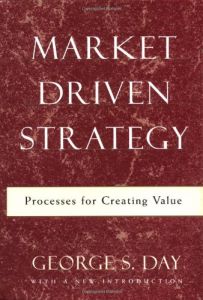Join getAbstract to access the summary!

Join getAbstract to access the summary!
George S. Day
Market Driven Strategy
Processes for Creating Value
Free Press, 1999
What's inside?
Even the best strategic thinking is only as good as your ability to implement it.
Recommendation
It’s funny how little things really change. George S. Day’s book originally appeared a decade ago, but it reappears now with a theme that has since become a management mantra - let the market drive your business. While many newer books enumerate the basics of business strategy, the examples that Day culled from the likes of Otis Elevator, GE, Ikea, Acuson and 3M still illustrate the fundamental themes as well as any. The book’s one shortcoming is its academic tone, which might be expected from an author who is also a professor, but nevertheless might try the patience of some business professionals. Despite this one flaw, getabstract.com recommends this book as a straightforward exposition on business strategy that has truly stood the test of time.
Summary
About the Author
George S. Day is a professor at the University of Pennsylvania’s Wharton School of Business and director of the Huntsman Center for Global Competition and Innovation. He is the author of more than 125 articles for marketing and management journals and has written 14 books, including The Market Driven Organization. Day received the Charles Coolidge Parlin Award and the Paul D. Converse Award for his work in marketing. He lives in Bryn Mawr, Pennsylvania.

















Comment on this summary